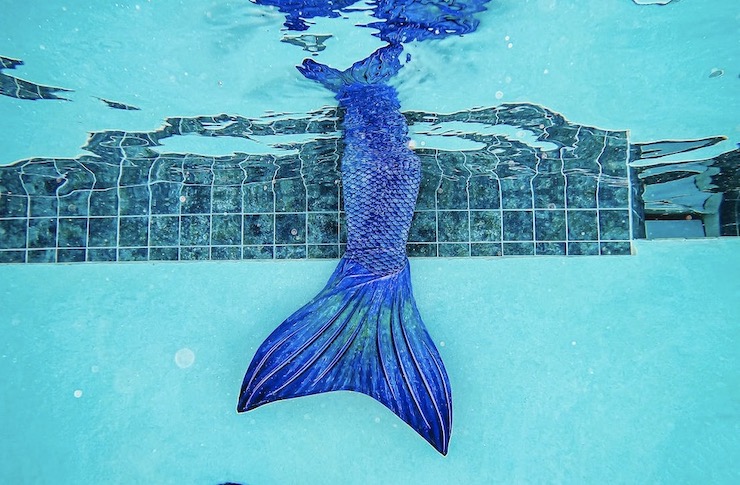Drone “Mermaids”? Not Just an Underwater Fantasy

It’s well known that drones can boldly go where humans cannot. But they rarely look like humans when they do. One exception: The drone “mermaid.”
First unveiled back in 2016, “Ocean 1” is a next-generation underwater robot with mechanical “hands” and a high-powered camera inserted into each “eye” that can inspect bridges and coral reefs and even search for and retrieve sunken treasure – at depths unsafe for human divers.
Ocean 1 isn’t a “she” or even a “he,” of course – and the drone doesn’t have a mermaid’s tail or sing songs to lonely sailors. But it’s eerily lifelike.
According to Stanford University Prof. Oussama Khatid, Ocean 1’s designer, what makes the mermaid drone special is not simply its ability to patrol the ocean’s depths. It’s the “haptics” technology that links the robot to its remote handler – not simply digitally, but through a special system of sensors that allows a trained technician, sitting at a console, to “feel” exactly what the robot’s “hands” feel, and to direct the robot’s grippers to clutch precious artifacts at just the right pressure, then deposit them into container bins intact.
Last July, Khatid led a 20-man international expedition team – including marine biologists, underwater archaeologists and robotics specialists – to test out Ocean 1’s haptics during a search for the Aléria, a 2nd-Century Roman shipwreck that was believed to contain valuable ancient artifacts.
The expedition proved successful: Ocean 1, guided by its handler aboard the research vessel Alfred Merlin, was able to sift through the Aléria wreckage and find and retrieve four centuries-old oil lamps and a precious vase, returning to the surface with all five items intact.
“The oil lamps found on the Aléria wreck bear extremely important inscriptions for dating the cargo and understanding the economic and historical environment of the site,” said a member of Khatid’s research team. “These are essential to understand and date the wreck Aléria and to understand where this wreck is located in the history of economic exchanges by sea in Roman times in the Mediterranean.”
Not all of Ocean 1’s missions are quite so daring. The mermaid drone has also searched for two sunken military vessels – a World War II P-38 Lightning aircraft 40 meters underwater and a submarine, Le Protée, resting at 124 meters. Even these more shallow dives have required some minor adjustments to the drone’s oscillators and pressure system. At lower depths – the Aléria was found at 500 feet – Khatid and his team have to pump oil into the drone’s arms to ensure that Ocean 1 can function at all.
Drone mermaids may have limited applications compared to other underwater drones that operate autonomously and can be deployed to collect data on marine conditions over many months across vast expanses of the ocean. But their niche is also unique: most other drones can only inspect and report what they see; the mermaid drone can probe into nooks and crannies, move wreckage and retrieve objects of interest.
Khatid insists that the real breakthrough with drone mermaid is the ability to allow humans to experience ocean life virtually, and at hitherto inaccessible depths – as if they were actually there. “You can feel that you are really immersed in these underwater environments without actually getting wet. I’ve never experienced anything like it in my life,” he says.
Buoyed by their success with the Aléria, Khatid and his team plan to conduct even deeper dives in the future. They’ve even renamed their drone mermaid Ocean 1K – “Ocean 1000” – to account for the greater depths of exploration they envision.
Khatid also plans to expand the drone’s missions to include a range of new applications, including inspections of damaged oil pipelines, decaying coral reefs and distressed fish habitats as well as explorations of “lost” cities buried at the bottom of deep lakes. Not all of these missions might be handled by Ocean 1 alone. Khatid also sees the need for a second remotely-piloted drone with enhanced lighting and visual observation technology that could swim alongside his mermaid to identify new areas and objects to be explored – and retrieved.
|